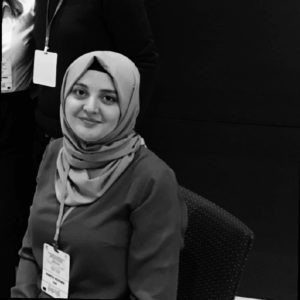How do children raised under protection access education in times of crisis?
In times of crisis, the primary focus in society is life and health. Afterwards, studies on education and other basic needs are carried out. The 2020 pandemic process management has progressed in a similar way. As a priority, rapid applications were developed regarding the prevention of the spread of the disease and the treatment processes. Although the severity of the disease continues, the economy and education aspects of the business were also discussed. In the education leg, the transition to distance education was made with a quick step. While primary, secondary and high school students participated in the classes through Eba, EbaTV and ZOOM, university students started to participate in education through the online platforms preferred by their universities. At this point, a subject that was worked on before the pandemic hit us in a much more concrete and sharp way: Is there equal opportunity in education in Turkey?
Distance education has played a savior role as the fastest and wisest solution in this process. But did all children have equal opportunities in accessing education? In families with low income or many children, there were difficulties in children’s access to computers, tablets and phones, and campaigns were organized. Added to this was the difficulties experienced by children living in rural areas in accessing the Internet. In short, while equality of opportunity in access to education was a topic that was discussed throughout the country, the difficulties faced by children who grew up under protection in accessing education did not come to the fore.
Closed institutions are structures whose internal order and difficulties we cannot control due to their structure. For this reason, we do not have concrete data on the difficulties experienced by children living under protection in institutional care. We only have assumptions based on our sensations. Is tablet or computer support provided for each child staying in children’s homes? Can children easily participate in their classes? At home, most parents stood by their children, making sure that they attended the lessons and kept track of their homework. So, who monitors the educational continuity and efficiency of the children, each of whom goes to a different class, in houses with an average of 5 people in institutional care? We don’t know.
The subject that we know and follow closely was the process of university students under protection. With the spread of the pandemic, KYKs, that is, student dormitories, were evacuated and turned into quarantine centers within the scope of quarantine measures. At that time, we watched together the shock of the young people who were expelled from their dormitories one night. University students returned to their families. So what did the protected youth do? The young people who met with the responsible social workers learned that they could return to the children’s homes where they were registered, but after they entered, they could not leave the institution due to the coronavirus measures. Some of them were informed that there was no place in the children’s home where they were registered. As a result, few of them returned to their children’s homes, while most of them rushed to find a place to stay. In this process, people went to their relatives and friends, but as the pandemic process did not end, young people under protection made an early and sudden entry into individual life. Another problem that met the youth who somehow solved the problem of accommodation was access to education. At that time, there were many young people who applied to Hayat Sende Association for computer and tablet access to education. We organized a campaign called #YaEvdeYoksam to draw attention to both the problem of accommodation and access to education, and we provided additional scholarships to our current scholarship holders, young people under protection. Although it is not enough, we tried to make this process easier for university students under protection. However, the problem is not solved. Protected university students continue to struggle with difficulties in accessing both housing and education.
In fact, the most effective way to prevent confusion and grievances in times of crisis is to be prepared before the crisis comes. If you have urgent implementation plans for crisis periods, it is easier to foresee these problems and take precautions before they come. Time is ticking and the pandemic is over. However, the loss of children and youth who have difficulties in accessing education remains a void that cannot be filled. The process passes, but the traumas experienced for the children under protection, who have been in closed institutions for months, are remembered as a painful memory. The process passes, but the feeling of isolation felt by protected university students who have been trying to stay with someone else for months and do not have a private space of their own remains a painful experience. Wishing for a society where all children, including children and young people who grow up under protection, are prepared for life with equal opportunities…

Rumeysa Bozdemir
Social Worker
Hayat Sende Association General Coordinator
